
Explore the extraordinary National Parks of the UK
Chances are at some point you’ve visited a National Park in the UK, but you may not know exactly what a National Park is, what it stands for and how it is run. The main aims of the National Park Authority are to set aside an area of wilderness for people to enjoy and explore, while at the same time protecting the landscape, plants and wildlife so that it can continue to delight generations to come. In essence, to conserve the beauty of the place, while at the same time encouraging visitors, promoting opportunities in the area and providing an understanding of the Park and its cultural heritage. National Parks also protect vital habitats and encourage biodiversity, preserving the environment and in the long term, lessening the impact of climate change.
Americans came up with the idea first - making the extraordinary Yellowstone into a National Park in 1872. The UK lagged behind a bit, but finally got its act together in 1951 (literally - there was a Parliamentary Act), with the authority making the Peak District the first ever designated National Park in England. Others followed across England, Scotland and Wales, and there are now 15 across the UK, covering some of the richest, most glorious landscapes you’ll see anywhere in the world. And if you think a visit to a National Park is just a good opportunity for a day trip with a camera and a sandwich, think again. You are actually visiting a living landscape that is part of a large and important recovery plan for nature and the environment. Wow.
This year, the year that we all recover from a locked-down, pale existence, why not rediscover the joy and the necessity of getting outside and into large, green and glorious spaces; connecting with nature and exploring the landscapes around us. In all likelihood, there is a National Park not too far away from you and anyone can visit at any time for free, so pull on your hiking boots or grab a bike, canoe, your horse or a pair of skies (yes!), and explore the wonders of the National Parks across the UK.....
Loch Lomond and The Trossachs, Scotland
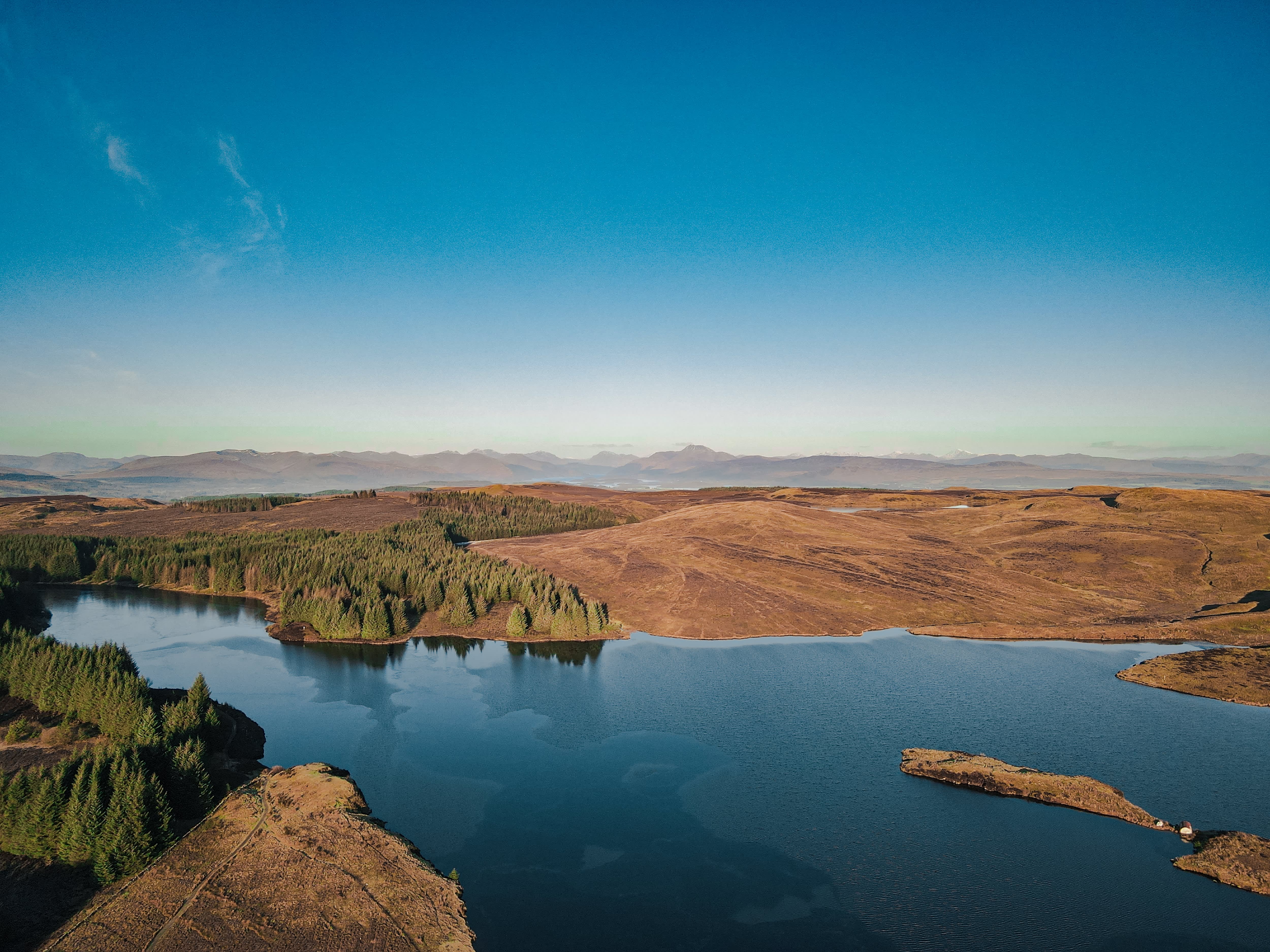
Loch Lomond and The Trossachs, Scotland - Featured accommodation
Loch Lomond is a large lake in Scotland that forms part of Loch Lomond and The Trossachs National Park. The Park is home to a large number of tall (by UK standards anyway) mountains including 21 Munros; a Munro being a peak of over 3000 feet. The terrain offers excellent hiking and climbing of varying degrees of difficulty and the many lochs mean there are plenty of adventures to be had out on the water too. The scenery is absolutely stunning and there are breathtaking views pretty much everywhere you go, whether you are climbing up Ben Lomond or along the cascading waterfalls of Dochart. Loch Lomond itself is a loch unlike any other, home to over 20 islands within it, many of them wooded and brimming with wildlife (even wallabies apparently, but that's a whole other story). The National Park Visitor Centre at Balmaha is a good place to learn about your surroundings and how the Park was formed over 400 million years ago, creating the highlands and lowlands and allowing such a diverse number of habitats. With the extraordinary and varied landscape of mountains, forest parks, lochs and glens, Loch Lomond and The Trossachs National Park is a fantastic holiday destination and a playground for all kinds of adventures. Whether you are into camping, cycling, sailing or climbing, it is the perfect place to make the most of the great outdoors.
The Yorkshire Dales National Park, England
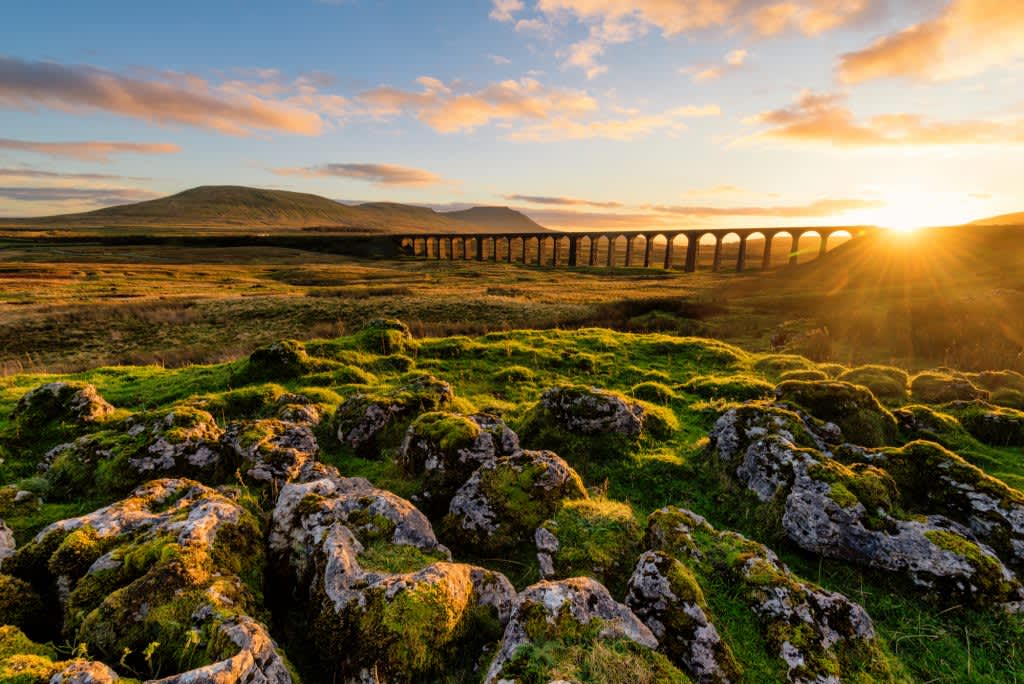
The Yorkshire Dales National Park, England - Featured accommodation
The National Park authority who strive to conserve the beauty, wildlife and cultural heritage of all National Parks in the UK have certainly done their job well up here in the Yorkshire Dales. It's like stepping back in time to a world where life was glorious and simple, slow-paced and magical, with rolling green fields stretching as far as the eye can see and only a stream, dry stone wall or old-fashioned tea shop to navigate around. Striding through the Yorkshire Dales is good for the soul. It is famous for its incredible scenery; deep valleys (the Dales), heather-covered moorland and distinctive hills, including the famous Yorkshire Three Peaks. Hikers and cyclists love the meandering roads and trails through the picturesque villages and farmland. Or travel on the historic steam train from Settle to Carlisle which cuts through the National Park, taking in 20 viaducts, 14 tunnels and miles of unspoiled views. Other sights to see include the huge curved cliff at Malham Cove, formed in the last Ice Age, the unworldly rock formations at Brimham Rocks and Hardraw Force, England's highest single drop waterfall. The Dales offer an amazing opportunity to get back to nature and explore some of England's most beautiful countryside and, with the warm welcome of the locals, the Yorkshire Dales National Park will be a place that will be remembered long after you leave.
picture credit: ytb.org.uk
Snowdonia National Park, Wales
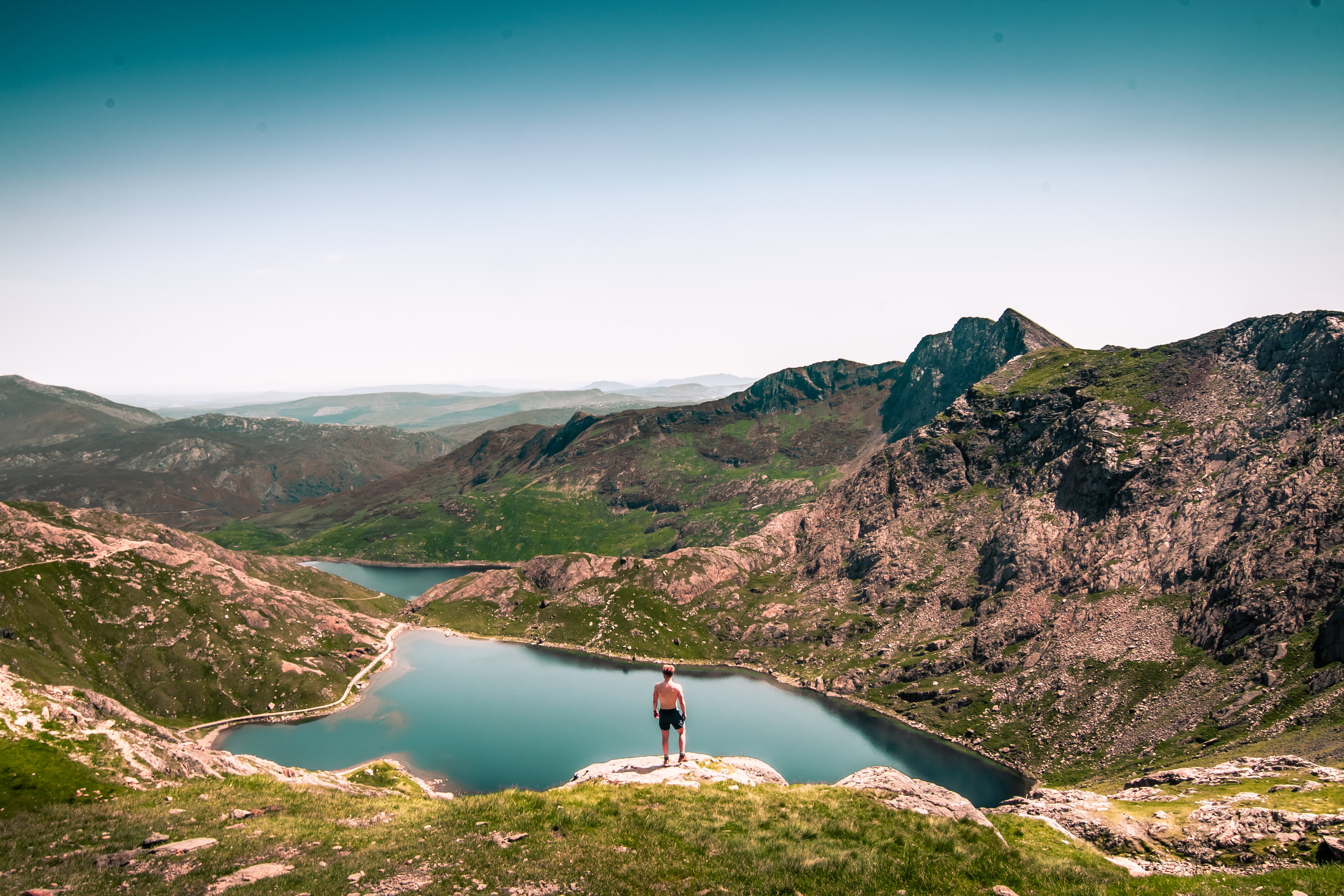
Snowdonia National Park, Wales - Featured accommodation
Snowdonia National Park is a stunning area in northwest Wales, made up of mountains and glacial landscapes covering 823 square miles, with 14 peaks taller than 3000 feet and over 100 lakes. The National Park is home to over 26,000 people and steeped in culture and tradition, with more than half the population speaking native Welsh. Around 10 million people visit Snowdonia National Park every year to explore the many attractions, but don't let that put you off; there are miles of gorgeous Welsh hills for everyone. If you don't want to hike or cycle, then a great way to see around is on one of the many small mountain train journeys - with jaw-dropping views aplenty - across Llyn Pada, Talyllyn, Bala Lake and the Welsh Highland railway, all taking you through the winding countryside. The jewel in the crown, Mount Snowden is the largest peak in England and Wales and offers views across to Ireland on a clear day. There is also a mountain train to the top if you aren't keen on the climb. Hills aside, the beautiful Snowdonia landscape is packed with history; the evidence of which can be seen everywhere - ruins of hills forts, standing stones and medieval castles, meaning there is a huge amount to explore here, so leave yourself plenty of time.
Dartmoor National Park, England
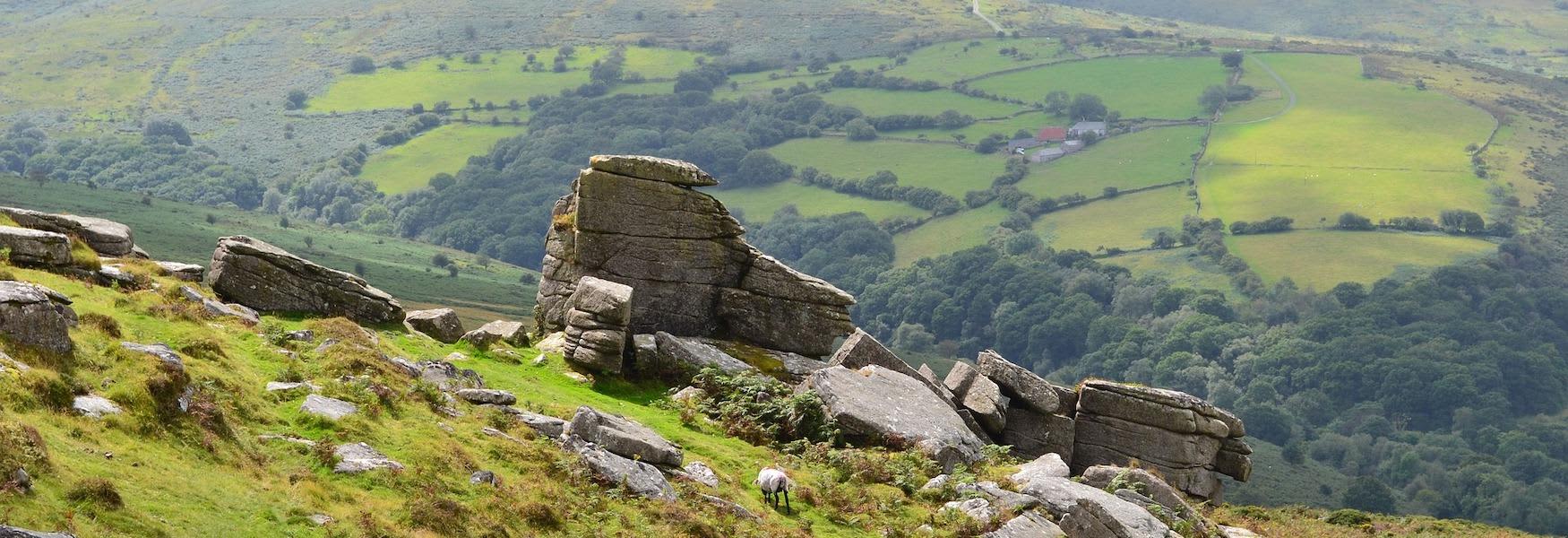
Dartmoor National Park, England - Featured accommodation
With high craggy moorland and fast-flowing rivers, Dartmoor National Park in southwest England is renowned for being one of the country's finest landscapes. An extraordinary place, mysterious and brooding, Dartmoor is known for its wildness and striking granite rock formations, for being a place of remoteness and tranquility. Many Stone Age tombs and Bronze Age stone circles exist here, as well as medieval farmhouses and other archeological gems, and the National Park always has heritage projects underway to clear vegetation, making sure these treasures are preserved and protected. The unique landscape has been the inspiration of many writers and painters, including Sir Arthur Conan Doyle's "Hound of the Baskervilles" which is set against Dartmoor's wilderness. There is an award-winning National Park Visitor Centre at Princetown where you can learn all about the history of Dartmoor and while here you can also visit the prison museum, a foreboding building built during the Napoleonic Wars. Dartmoor National Park is a truly fascinating place to visit, full of tradition, folklore, inspiration and history.
picture credit: englishriviera.co.uk
The Lake District National Park, England
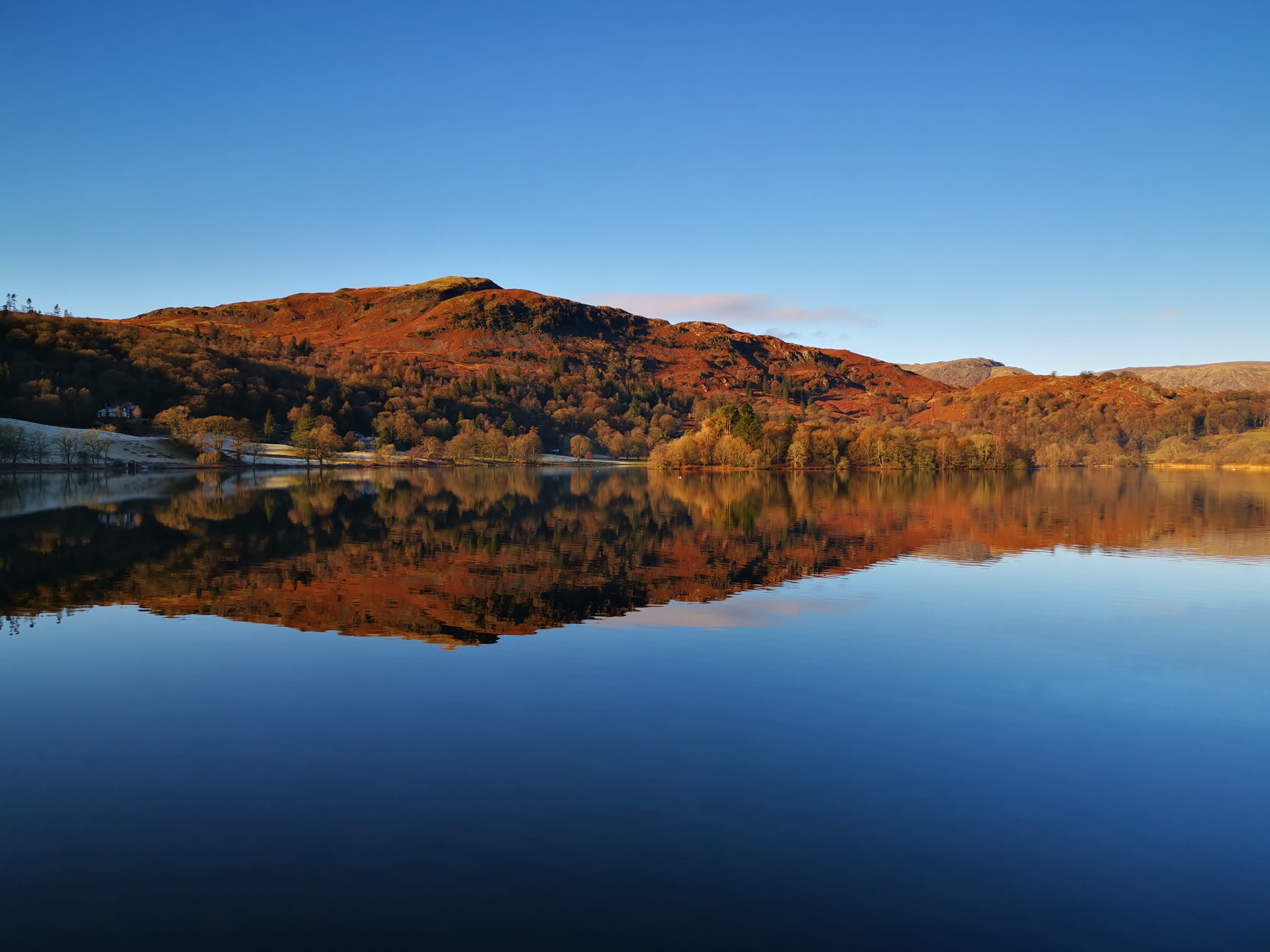
The Lake District National Park, England - Featured accommodation
The Lake District National Park in Cumbria is England's largest National Park, and in 2017 it also became a World Heritage Site, joining The Great Barrier Reef and the Grand Canyon as a place of international acclaim. It's a showstopper. Emerald green rolling hills, thick woodland, vast brooding lakes and snow-topped peaks, the Lake District is home to England's highest mountain - Scarfel Pike - and its deepest lake, Wastwater. For outward bounders and lovers of the great outdoors, the Lake District National Park is the place to be. The activities on offer are endless; hiking, climbing, mountain biking, canoeing, water sports of every description and, for adrenaline junkies, abseiling, caving and gorge scrambling. There are bustling market towns such as Keswick, Ambleside, Bowness and Kendall as well as spaces of such wild wilderness, you'll feel like the only one roaming the open fells for miles around.
Peak District National Park, England
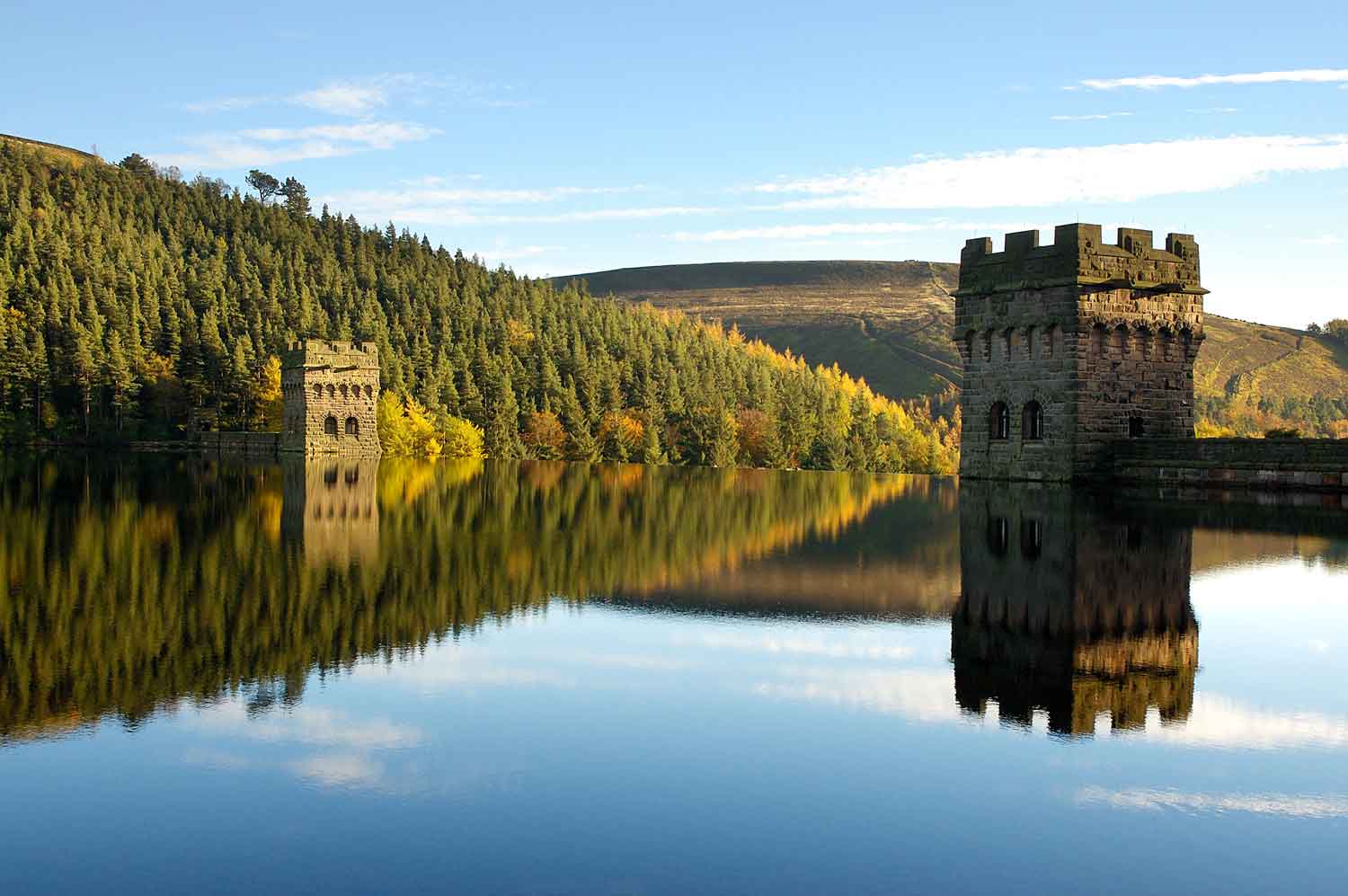
Peak District National Park, England - Featured accommodation
The Peak District National Park was the first in the UK to be officially designated a National Park back in 1951 and covers the most beautiful parts of Derbyshire, Staffordshire, Cheshire and Yorkshire. People flock here to escape the crowds and to enjoy the stunning countryside from the many footpaths, bridleways and cycle trails. It is a diverse landscape, with lush pastures and rolling green hills characterising the White Peak in the south, and the wild moorland and dark craggy terrain of the Dark Peak in the North. The Peak District is a place of mystery, with evidence of ancient civilisations living here from the Stone Age, Bronze Age and Iron Age; stone circles, cairns, standing stones and cave houses have all been uncovered here. Past excavations of Thor's Cave - a natural cavern in the Manifold Valley - have found stone tools, pottery and several burial sites among other things. The iconic peak of Mam Tor and the romantic ruins of Peveril Castle are also well worth visiting while you are visiting the beautiful Peak District.
picture credit: peakdistrictgov.uk
The Cairngorms National Park, Scotland
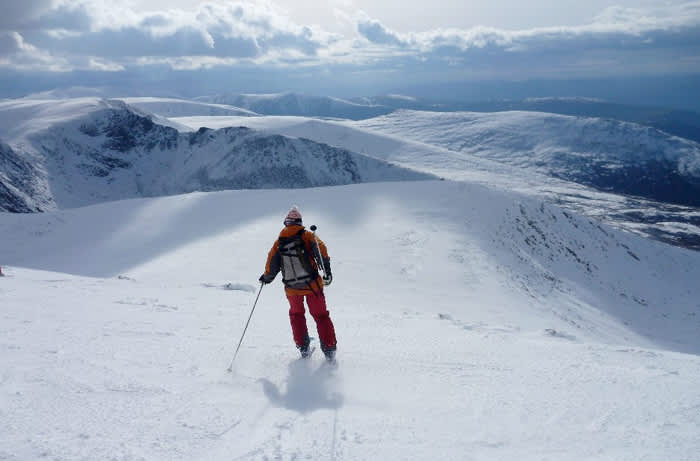
The Cairngorms National Park, Scotland - Featured accommodation
The mighty Cairngorms National Park, in the heart of the Scottish Highlands, is the UK's biggest National Park - twice the size of the Lake District - and is world-renowned for its incredible landscapes and breathtaking scenery, with huge mountains, vast Caledonian pine forests, rivers and lochs. Winter months in the Cairngorms usually mean hefty snowfall, and this attracts people from far and wide for skiing, snowboarding and many other snow-based sports. Head to Aviemore as a base if you want to be at the centre of the action in the most extensive range of arctic mountain landscape in the British Isles, and here you can book all the activities you could possibly imagine. Aviemore can be busy all year round, but you're never far away from the wilderness, and whether it is summer or winter, you can choose to hike, bike, canoe or climb your way across the Park; there is something for everyone. The Cairngorms is an amazing place to spot wildlife too, especially rare breeds, as it is home to a quarter of the UK's most endangered species. Keep your eyes peeled for golden eagles, wildcats, voles, otters and red squirrels amongst other things; there are nine nature reserve across the Cairngorms National Park which all protect this incredible array of wildlife, and if you think you might need some help, book a guide who will be on hand to point things out! Stunning scenery aside, the Cairngorms is also home to ancient fortresses, distilleries museums and other attractions so when you visit here, leave enough time to explore this unforgettable National Park.
picture credit: cairngorms.co.uk
Brecon Beacons National Park, Wales
Brecon Beacons National Park, Wales - Featured accommodation
If you are after fresh air, wide open spaces and some of the best walking routes in the UK, then the Brecon Beacons National Park is probably somewhere you should get on your radar, with its magnificent hills, lakes, caves, forests and waterfalls to explore and discover. Waterfall Country - nestled into the south-west corner of the National Park - is one of the many treasures, where four separate rivers wind their way through tree-lined gorges over a series of dramatic waterfalls, before joining together to form the River Neath. And wherever you are in the Brecon Beacons, you are not far from an impressive castle - the many ruins throughout the area tell tales of the area's turbulent past and of power struggles and battles between rulers and Princes, Carreg Cennen Castle being one of the most dramatic. People have lived and worked in the Breacon Beacons for nearly 8000 years, and these communities have left their marks on the landscape, whether it be through monuments, characterful villages, churches, fortresses and museums which look back through history and give us a glimpse of life gone by. The Park also has some of the best quality dark skies in Great Britain, making it an excellent destination for stargazing....and probably worth a camping trip to make the most of it!
Pembrokeshire Coast National Park, Wales
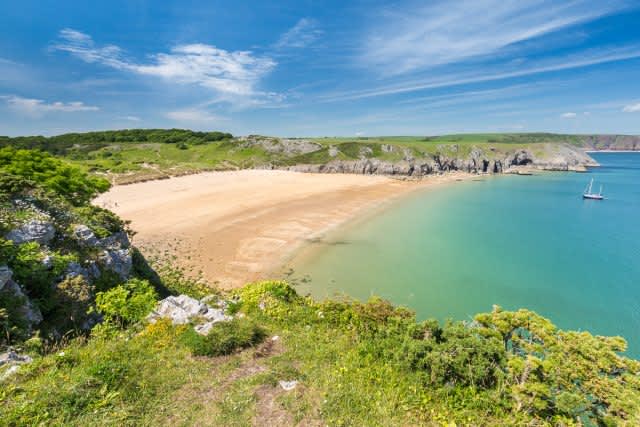
Pembrokeshire Coast National Park, Wales - Featured accommodation
I've said it before and I'll say it again, there are none so beautiful as some of the beaches on the west coast of Wales. In the Pembrokeshire Coast National Park, 11 beaches are blue flag rated, 12 have achieved Green coast awards and 16 have been named seaside award winners. To get in on the action, visit Barafundle Bay, Whitesands, Newgale or Freshwater West (to name just a few) where there is excellent swimming, surfing and other water sports in the clear turquoise waters. People visit this National Park for the stunning views, incredible sea caves and 186 miles of coastal path, buzzing with flora and fauna and covering some of the most beautiful and varied scenery in Great Britain. Although nowhere here is further than 10 miles from the sea, the landscape of hills, estuaries, valleys and woodlands means that there is plenty to explore inland too, and the beauty is - it never feels overcrowded. Ecologically, it is one of the most diverse areas of Wales, with a vast range of habitats and many rare species to be found here and the National Park works hard to conserve these habitats and keep them thriving. Spot dolphins, seals and whales off the coast, visit the ancient sites of Preseli Hills and Carew Castle, enjoy the wonders of the Blue Lagoon or visit St Davids, the smallest city in the UK. Whatever you want to do, the Pembrokeshire Coast National Park is perfect for hikers, cyclists, wildlife lovers and anyone who wants to relax and enjoy this stunning part of the country.
picture credit: pembrokeshirecoast.wales
Northumberland National Park, England

Northumberland National Park, England - Featured accommodation
The Northumberland National Park is one of the least visited National Parks in the UK, so this is one to escape to if you are looking for peaceful beauty spots, little-known walking routes and remote, tranquil landscapes. It borders Scotland, with the Cheviot Hills mountain range covering a large area in the northern part of the Park and to the south, lies the Hadrian's Wall World Heritage Site. The extraordinary, 2000-year old Hadrian's Wall is the best known and best preserved frontier of the Roman Empire and stretches across 73 miles of rolling hills and countryside; today you can still see the forts, the foundations of a hospital and army barracks. The Sill National Landscape Discovery Centre is located on Hadrian's Wall and is an excellent place to start your exploration of the history and heritage of the Park, with exhibitions, information and viewing platforms with panoramic views across the Northumberland countryside. Aside from Hadrian's Wall there are other iconic and ancient spots to uncover here; prehistoric hill forts, rugged castles and fortified farmhouses, Northumberland National Park is bursting with history. Discover the remains of a third-century Roman temple; Brocolita, the Temple of Mithras or Bronze Age burial sites in the Breamish Valley. The secluded College Valley is home to absolutely stunning scenery, ruins of ancient hillforts and rare Wild Cheviot goats; cars are limited here (permits only) to preserve the clean air so it is best to arrive by bike or on foot.
picture credit: visitbritain
Norfolk Broads National Park, England
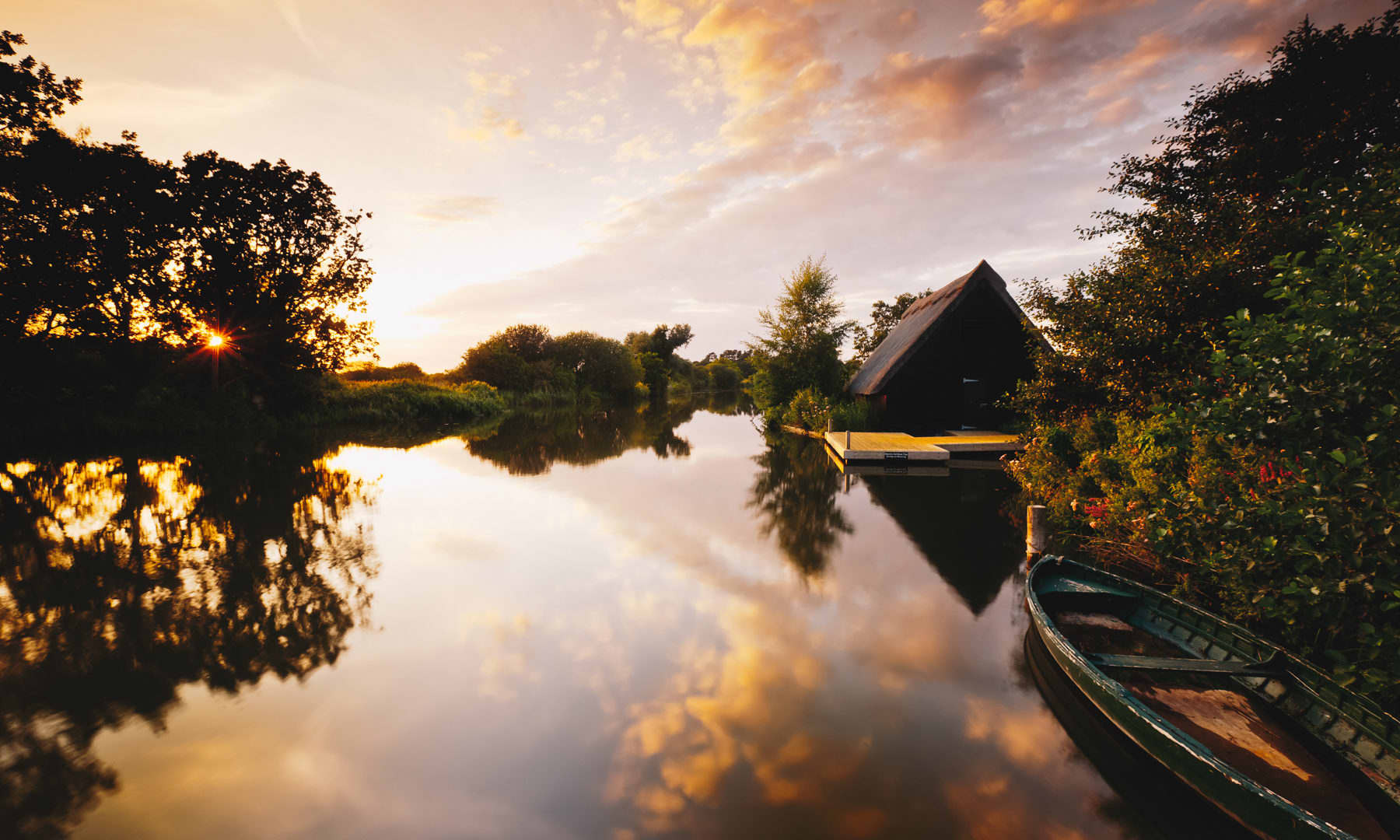
Norfolk Broads National Park, England - Featured accommodation
The Norfolk Broads National Park, or the Broads as it is more commonly known, is made up of a vast network of lakes, rivers and open areas of water - mostly navigable - across the counties of Norfolk and Suffolk. With over 125 miles of lock-free waterways, predominantly less than 4 metres deep, it is the perfect place to have a go at boating, canoeing or sailing. If your sea legs are a bit on the wobbly side, explore the endless riverside paths and rural country lanes either on foot or by bike instead. The Norfolk Broads is considered to be very much a wildlife National Park; in the water, on land and in the sky there is so much to see, and in fact, the Park is home to more than a quarter of Britains rarest animals and plants, including many that are completely unique to the area. With this incredible biodiversity across nine national nature reserves within the Broads, conservation is vital, and the Park is the UK's largest protected wetland. So, a great place for bird spotters and wildlife lovers alike. With many pretty villages and towns to visit along the way, the tranquil Norfolk Broads National Park has been a hugely popular destination to take a holiday since way back in Victorian times. The stunning landscapes, marshland, woodlands and waterways make it a completely unique staycation.
picture credit: nationalparks.uk
New Forest National Park, England

New Forest National Park, England - Featured accommodation
An extraordinary thing happens when you enter the New Forest National Park. As you wander through the idyllic glades, across the heathland and under the boughs of ancient trees, you can positively feel yourself relaxing and unwinding. And there is an excellent and scientifically based reason for this. The very mindful Japanese have been practicing Shrinrin-Yoko (that is 'forest bathing' to you and me and our chakras) for years, and finally it seems that we westerners are starting to realise the benefits. Research has shown that sitting in a forest reduces blood pressure and the production of stress-related hormones. Which in turn can counter anxiety, depression, stress and even aid sleep. So now we know why a trip to the New Forest will leave you completely invigorated. So back to the Park itself. The New Forest National Park is a place unchanged by time and is a paradise for nature lovers, with walking and cycling trails winding through miles and miles of rugged heathland and pastures. As well as 193,000 acres of woodland, the Park is also home to 40 miles of coastline and the waterways of Beaulieu River and the Keyhaven Marshes. At the very heart of the New Forest is Bolderwood Deer Sanctuary, with a platform overlooking a meadow to view these lovely animals in their natural environment. The deer are fed daily between April and September, so you have a very good chance indeed of spotting a large herd. Wildlife seekers will also love the (3000 or so) free-roaming New Forest ponies, cattle, donkeys and even pigs meandering down the pretty country roads and wandering through villages. With its old-world charm and packed with wildlife and history, there is nowhere quite like the New Forest anywhere else in the UK.
picture credit: newforestnpa.gov.uk
Exmoor National Park, England
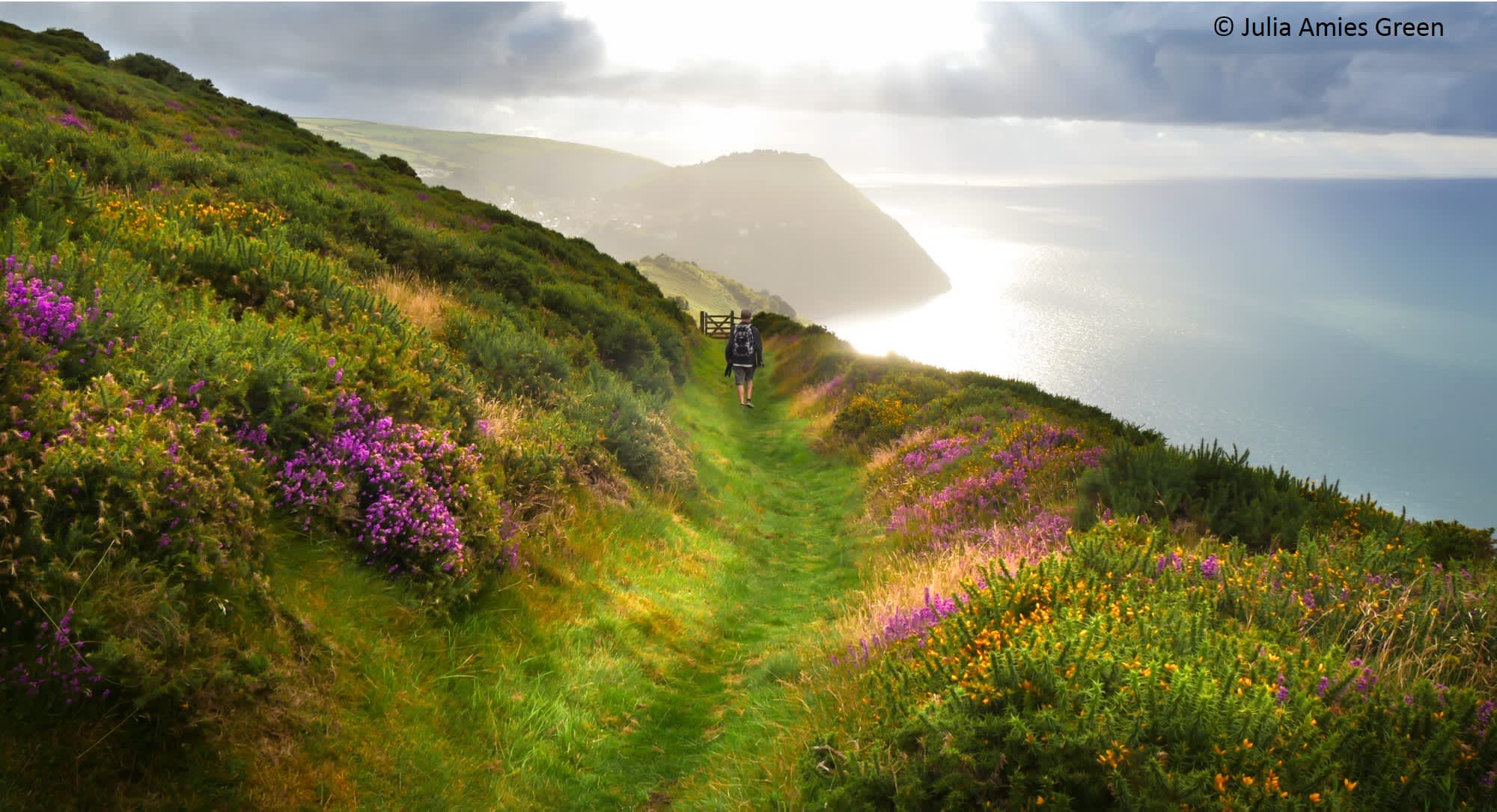
Exmoor National Park, England - Featured accommodation
Exmoor National Park, covering land in the counties of Somerset and Devon is made up of wild moors, farmland, deep wooded valleys and dramatic coastline, meaning it is a diverse and unique landscape with extraordinarily lovely views around every corner. The huge areas of moorland provide remote and secluded trails, which is a rare find in southern England! Whether you want to walk the miles of ancient trails, take a trip on a Victorian steam train, visit the famous Exmoor ponies up on the moors or take part in some thrill-seeking adventures in Croyde or Hele Bay, Exmoor has it all. Exmoor was Europes first ever International Dark Sky Reserve, which makes it one of the best places in the UK for stargazing. On a clear, dark night, the Milky Way is clearly visible along with thousands of stars and constellations. The annual Dark Skies festival in Exmoor in October is a great time to come along and spot the many shooting stars and experience it for yourself. A magical place.
picture credit: exmoor-nationalpark.gov.uk
North York Moors National Park, England

North York Moors National Park, England - Featured accommodation
The North York Moors National Park lies between Scarborough and Middlesborough on the north-east coast of England and is easily recognisable by the vast expanse of stunning purple-hued heather moorland. The National Park also includes some of the Yorkshire coasts most popular holiday spots, such as the pretty fishing village of Robin Hoods Bay, the Dracula-inspiring and utterly lovely seaside town of Whitby, and Captain Cooks village of Staithes. There is so much to see and do up here and the Park itself is absolutely delightful. Take a spring walk through "Daffodil Dale" to see the gorgeous wild daffodils in the valley of Farndale. Or explore the legendary Hole of Horcum, a circular walk around a deep hollow created over thousands of years, forming a natural 'Amphitheatre'. The North York Moors is steeped in history and heritage at every corner; the stunning ruins of Whitby Abbey and Rievaulx Abbey, the Victorian heritage railway, monasteries, stately homes and ancient maritime villages make this National Park a really extraordinary place and one to preserve, understand and visit.
picture credit: northyorkmoors.co.uk
South Downs National Park, England
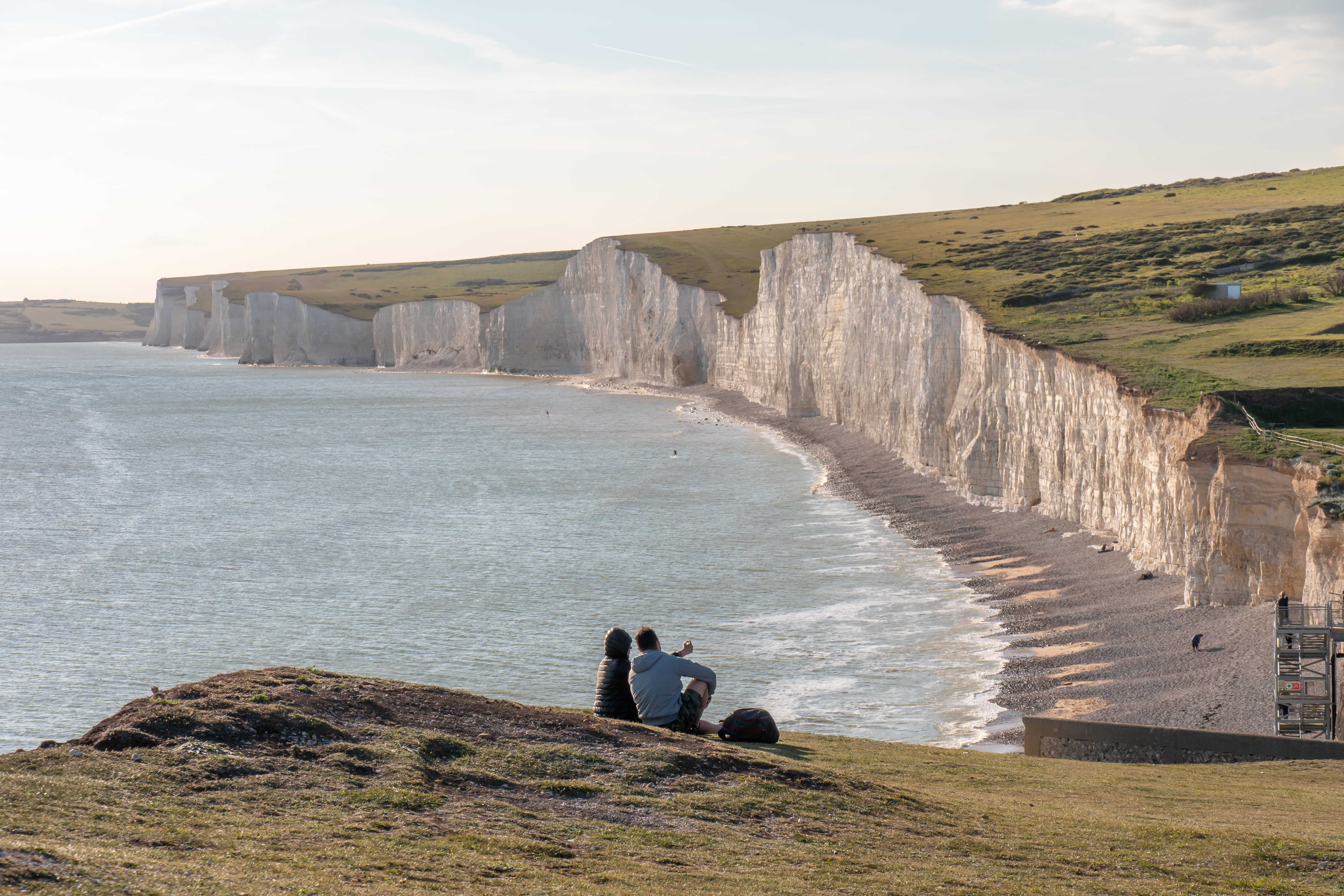
South Downs National Park, England - Featured accommodation
The South Downs is the most recent addition to the National Parks of England, having been awarded National Park status in 2010 - much to the delight of many of its southern residents. The 600 square miles of countryside stretch from Winchester in Hampshire to Beachy Head in East Sussex, and the Downs is characterised by green rolling hills, pretty villages and is in fact, is the most visited National Park in the UK. One of the most striking and iconic landmarks is the range of dramatic chalk hills running all the way through the three counties of Hampshire, West Sussex and East Sussex, which become the famous white cliffs when they reach the English Channel; the stunning Seven Sisters Country Park being one of the most visited. The South Downs National Park is also an extraordinary museum in itself; the land has been lived and worked on by tribes of people since ancient times; Stone Age and Iron Age settlers, Romans, Saxons, Normans and Victorians have all played a role in shaping the landscape which is now so wonderfully preserved by the National Parks authority. There are a number of archaeological sites and buildings to be explored such as the Cissbury Ring, the Devils Humps and the impressive Bignor Roman Villa, where you are able to walk through the excavated mosaic floors and treasure trove of Roman artefacts. Walk, cycle or horseride along the many trails of the South Downs Way, through countryside that author Bill Bryson described as: "some of England's finest".
picture credit: southdowns.gov.uk
Amazing aren't they? It's a full time business maintaining the National Parks, allowing them to be adventure playgrounds for the public while at the same time monitoring the protection and conservation of wildlife, the countryside, the mountains, the lakes, castles and archaeological sites. The National Parks Authority do the most amazing job and they are constantly running conservation projects, protecting the space and teaching adults and children about these diverse areas. Go and explore!
Featured in:
Pembrokeshire, Wales, UK
Somerset, South West England, UK
Norfolk, East Anglia, UK
Aviemore
Scotland
Wales
Cumbria, North West England, UK
North Yorkshire, UK
Whitby
Hampshire, South East England, UK
East Sussex, South East England, UK
West Sussex, South East England, UK
New Forest, Hampshire, UK
Northumberland, North England, UK
Devon, South West England, UK
Featured Accommodations
Pembrokeshire, Wales, UK Accommodations
Discover amazing camping and glamping sites in Pembrokeshire, Wales, UK. Perfect for your next outdoor adventure.
Somerset, South West England, UK Accommodations
Discover amazing camping and glamping sites in Somerset, South West England, UK. Perfect for your next outdoor adventure.
Norfolk, East Anglia, UK Accommodations
Discover amazing camping and glamping sites in Norfolk, East Anglia, UK. Perfect for your next outdoor adventure.
Related Experiences
Climbing Experiences
Find exciting climbing activities and experiences. Perfect for adventure seekers and families.
Lakes around the UK Experiences
Find exciting lakes around the uk activities and experiences. Perfect for adventure seekers and families.
Canoeing and Kayaking Experiences
Find exciting canoeing and kayaking activities and experiences. Perfect for adventure seekers and families.

